Search Thermo Fisher Scientific
Invitrogen
BrdU Monoclonal Antibody (MoBU-1), Alexa Fluor™ 647
FIGURE: 1 / 9
BrdU Antibody (B35133) in IHC
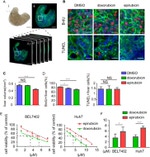
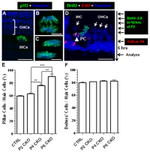
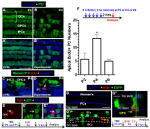
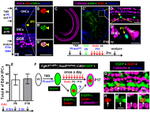
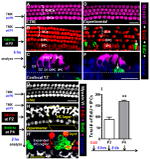
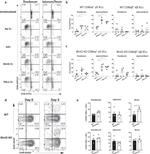
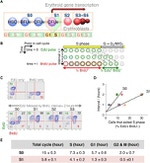
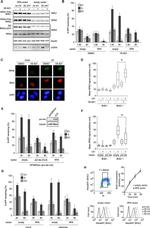
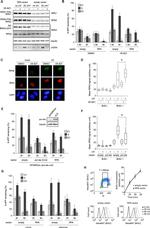
Product Details
B35133
Species Reactivity
Published species
Host/Isotype
Class
Type
Clone
Immunogen
Conjugate
Excitation/Emission Max
Form
Concentration
Purification
Storage buffer
Contains
Storage conditions
Shipping conditions
RRID
Product Specific Information
Cell proliferation can be measured with BrdU following its incorporation into newly synthesized DNA and its subsequent detection with an anti-BrdU antibody. Although this method is rapidly being replaced with the recently developed click chemistry-based Click-iTTM EdU assay, an advantage of the antibody clone MoBU-1 is that it does not cross-react with the thymidine analog EdU (5-ethynyl-2'-deoxyuridine), thus making it valuable for use in dual-pulse applications. Traditionally, the dual-pulse method, which is used for studying biological events such as neurogenesis and cell differentiation or evaluating anti-cancer drug efficacy, employs BrdU immunocytochemistry with iododeoxyuridine (IdU) or chlorodeoxyuridine (CldU), using multiple antibodies for detection. However, using sequential pulses of the thymidine analogs EdU and BrdU greatly simplifies dual-pulse labeling, and allows a straightforward and reliable method of distinguishing BrdU- and EdU-labeled cells. In addition to no cross-reactivity with EdU, the MoBU-1 clone has a high specificity for BrdU. This clone can also readily detect bromouridine (BrU) incorporated into RNA or BrdUTP incorporated into DNA strand breaks via the TUNEL assay. Samples labeled with the Alexa FluorTM conjugates of MoBU-1 can be directly imaged by fluorescence microscopy or high-content imaging. The approximate fluorescence excitation/emission maxima for Alexa FluorTM647 conjugate are 650/665 or 670 in nm.
Detection with BrdU antibodies requires not only fixed and permeabilized cells, but also denatured DNA for the BrdU antibody to gain access to the incorporated BrdU. The appropriate dilution of the antibody and the incubation time should be determined empirically. We recommend the following starting points for Alexa FluorTM conjugate: 1-4 µg/mL (1:200-1:50 dilution). Labeled samples are compatible with all slide preparation methods, including wet mount and prepared mounting media (i.e., SlowFadeTM Antifade and ProLongTM Gold Kits).
Target Information
Bromodeoxyuridine (5-bromo-2-deoxyuridine, BrdU) is a synthetic nucleoside that is an analogue of thymidine. BrdU is commonly used in the detection of proliferating cells in living tissues, and can be incorporated into the newly synthesized DNA of replicating cells (during the S phase of the cell cycle), substituting for thymidine during DNA replication. Antibodies specific for BrdU can then be used to detect the incorporated chemical, thus indicating cells that were actively replicating their DNA. Binding of the antibody requires denaturation of the DNA, usually by exposing the cells to acid or heat.
For Research Use Only. Not for use in diagnostic procedures. Not for resale without express authorization.
Bioinformatics
Protein Aliases: 5-Bromo-2-deoxyuridine; Bromodeoxyuridine

Performance Guarantee
If an Invitrogen™ antibody doesn't perform as described on our website or datasheet,we'll replace the product at no cost to you, or provide you with a credit for a future purchase.*
Learn more
We're here to help
Get expert recommendations for common problems or connect directly with an on staff expert for technical assistance related to applications, equipment and general product use.
Contact tech support

